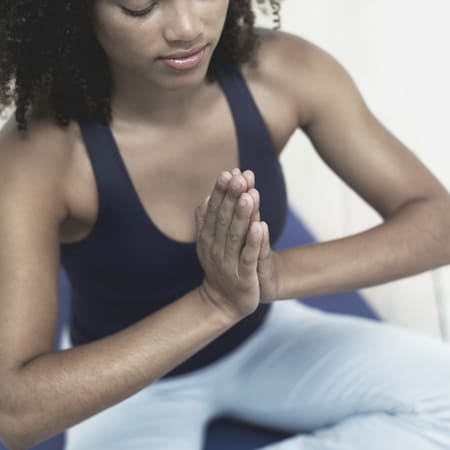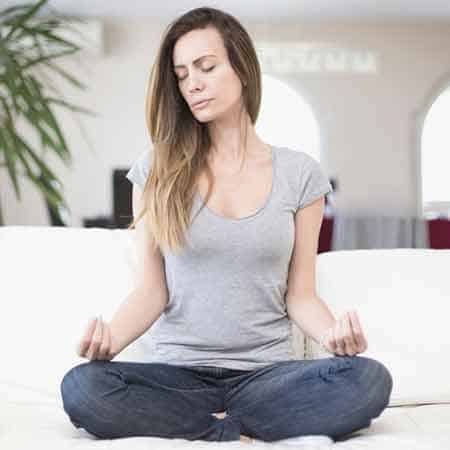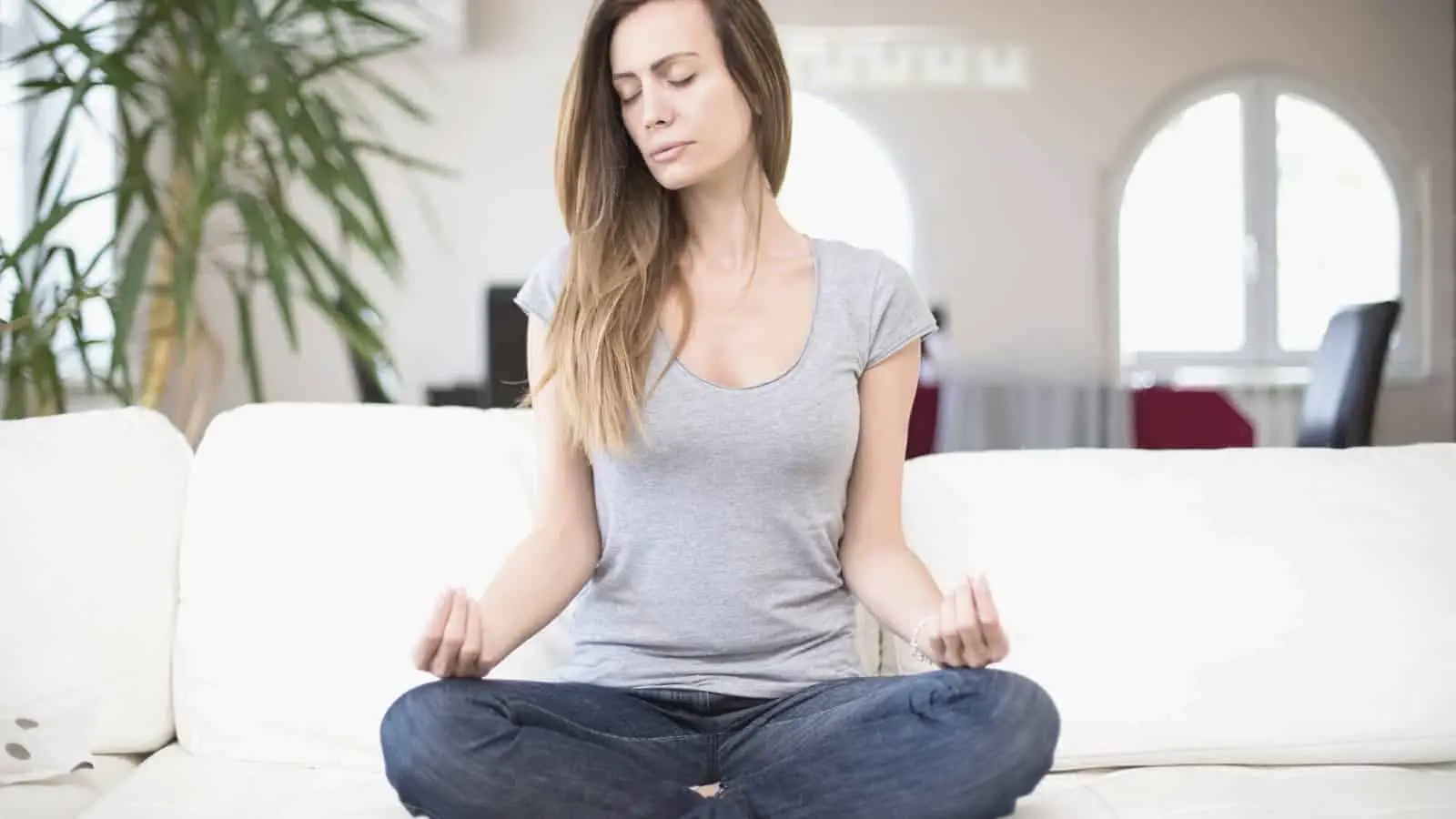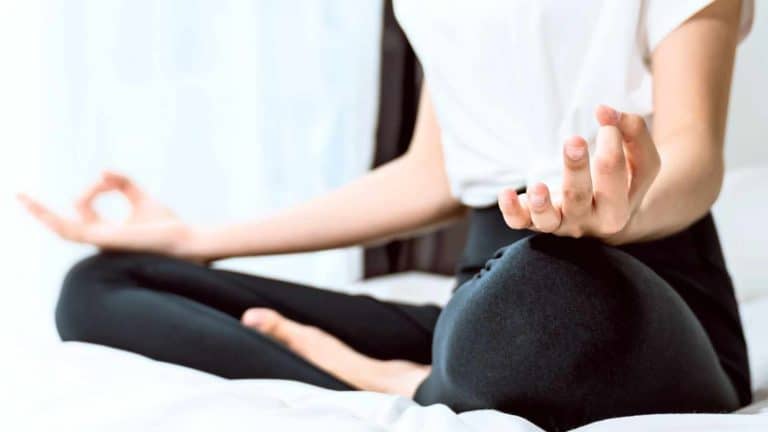Yoga and meditation are two parts of an important practice. Yoga focuses on the mind and body, and meditation adds in the spiritual component. Using both of these in tandem allows you to experience great benefits, but it can also make many feelings, emotions, memories come up, and you have to know that it is perfectly okay.
After meditation, many people feel settled, centered, content, and calm. However, there is no one way to feel after meditation. If you are experiencing other emotions or feelings after meditation, that is normal. Every mind and body can react differently to both practices.
In this post, you will learn about meditative practices. This post will also discuss what meditation is, how it works, and why it is good for you. We will go in-depth into the range of emotions that can occur during and after meditation. And finally, it will cover some tips for how to create a more consistent meditative practice.
How Should You Feel After Meditation?
People meditate for different reasons. Some people meditate to feel calmer or more centered. Some meditate to release tension, deal with traumas, or better manage stress. It is important to remember that meditation has no set outcome, so there is no exact way to know how you will feel after a meditation.
Not achieving that specific outcome (that you except) after each meditation practice should not be cause for alarm. When we experience emotions, be it positive or negative, they land very deep inside our body (and mind), and if not processed properly, they can surface unexpectedly at any given time. Meditation practice can speed up the process of releasing suppressed emotions, and since we all have different experiences in this life – we experience different outcomes after each yoga and/or meditation practice.

The following are the most common types of feelings and emotions experienced after mediation:
- Calmness
- Contentment
- Relaxation
- Peacefulness
- Restlessness
- Anger or frustration
- Crying
Why Do I Cry After Meditation?
t is not uncommon for people to experience crying during and after meditation. Do not worry if that happens to you; this is a completely normal reaction. This can be seen as a healthy release of past trauma, sadness, or stress.
Crying is your body’s way of releasing emotion and cleansing itself. Restlessness, anger, fear, and crying can be seen as negative outcomes after the meditation, but the truth is – it only indicates that your body is body is going through the cleansing process. Any time these emotions come up, know that it is normal. Everyone is human, everyone can experience a complete range of emotions, therefore releasing them is a very natural process.
Try disassociating your idea of what is considered negative in terms of feelings and reactions. If you achieve this goal, you are on track to entering a higher meditative state.
Contentment
Contentment is among the most common feelings to have after mediation. Usually, because you are focused on observing the sensations of your body, you become very in tune with yourself. Because of this strengthened connection between mind and body, many people experience sensations of happiness and contentment.
A few sensations you can feel to recognize contentment in the mind and body are listed below:
- A relaxed and easy smile
- Time has slowed down
- A sense of clarity
- Feeling light
- Radiating warmth
Relaxation
Most meditations usually focus on noticing your thoughts but not acting on them. This is very different from your everyday life, where you jump from thought to thought and moment to moment.
Additionally, meditation focuses on breathwork. This focus on slowing down the breath can trigger feelings of relaxation. It creates a calm environment to focus on letting go of the thoughts that distract you.
The following are signs of relaxation within your body that you can easily sense and take note of:
- Your shoulders lower
- Your jaw unclenches
- Other muscle groups become relaxed
- Headaches and other body aches decrease or disappear
- Your tight chest dissolves
- Your breathing has slowed down
It is nice to notice these different sensations in the body. It may even be helpful to start a mediation by focusing on relaxing different muscle groups.
Peacefulness
The nature of meditation is very peaceful for many individuals. Some meditation practices are led with a soothing voice or song (guided meditations) to help you relax. This type of practice is very calming and soothing to many.

There are many ways to discover a peaceful mind during mediation, including the following:
- Time passed quickly
- Loss of awareness
- A centered and grounded feeling
- Connection to the energy around you
Peacefulness is usually accompanied by relaxation. The two go hand in hand, so there is a lot of overlap in identifying your peacefulness. Because meditation requires you to let go of analyzing your thoughts, it creates an overall pleasant sense around meditation.
Other Feelings and Emotions
Meditation can sometimes invoke emotions connected to negative experiences, thoughts, and actions. However, much of meditation is not worrying about the emotions and instead focusing on the experience as a whole. Meditation is a great way to get in touch with your mind-body connection and strengthen this perception.
Frustration can occur for many mediation newcomers.
When reflecting on your meditative practice, do not get discouraged if you could not let go of the racing thoughts or distractions of everyday life. Even the most experienced yogis can feel frustrated after a meditation session. This can be due to any number of reasons and should not discourage you from trying to meditate again.
The following points are a few reasons you may be experiencing a more distracted meditative practice:
- Anxiety
- Stress
- Recent changes in your practice
- Too much judgment
Anyone can experience a restless feeling during mediation. Restlessness occurs because the meditation practice and your thoughts take time to adjust to each other. This adjustment can be very difficult to get over, especially if you have a natural tendency to bounce around, both in mind via your thoughts and your body through unconscious physical movements, such as tapping your foot.
In order to get out of this restless state, try doing the following things:
- Bring awareness back to your breathing and focus on taking deep, slow breaths;
- Tighten and relax different muscle groups, such as the calves, biceps, or fingers;
- Close down the eyes and find a quiet space. Generally, meditation can be calmer if you are away from distractions, both visual and auditory;
What is Meditation?
‘Meditation is the way to take deep rest and be alert & conscious at the same time! It is the skill to calm the mind and get in touch with your inner joy.‘
Sri Sri Ravi Shankar

Meditation can have a different meaning to everyone. It can also feel differently for every person. The idea behind meditation is to check in with your body, you, and do the inner “cleaning”. It requires you to notice your thoughts without judgment and focus on your breath. It brings your attention to the sensations of your body and eventually allows you to lose awareness as you rise into a calm, peaceful state.
The following are four basic categories that all meditations fall into:
- Guided
- Unguided
- Calming
- Insight
It is good practice for beginners to begin by following a guided meditation that leads you through a practice. Sometimes it is easier to start with a guided meditation, and then in the same practice, you can move into your own unguided meditation.
Find a Meditation Practice That Suits You
Most of the time, meditative practices can fall into multiple categories. There is no set recipe for a perfect meditative practice. Your meditation practice becomes your own as your thoughts and feelings change over time.
The following are different types of meditation that you can try:
- Guided meditation
- Body scan
- Awareness
- Visualization
- Reflection
Below is a chart to compare the pros and cons of a few of these meditation styles:
| Pros | Cons | |
| Guided Meditation | Great for beginners, Allows you to follow along with prompts, Any type of mediation can be guided, Presence of a teacher or guide can help you move through tough emotions as needed. | Can be distracting to hear another person’s voice, Can move too quickly for some people. |
| Unguided Meditation | Move at your own pace through time and space, Usually better for more experienced meditators, Any type of meditation can be unguided. | No one to lean on when difficult emotions or thoughts pop up, Relying completely on one’s self, No prompts to follow can make this type of practice more distracting. |
| Calming Meditation | Focused on improving concentration, Usually, focus is directed at one particular person, place, thing, or idea, Cultivates a quiet mind. | If concentrating on one thing is difficult for you, this mediation style may not come easily at first. |
| Insight Meditation | Uses an intention as its focal point, Creates a habit of noticing feelings and emotions, Transformation is the goal of these practices, Uses breathing to reinforce the set intention. | The mind can easily wander from the intention that was set, Getting back to intention without judgment can be difficult. |
Meditation is a practice. In order to get better at meditating, you have to train your mind and body through repeated practice.
You have heard the saying, “Practice makes it perfect.” Meditation is no exception to this mantra. In order to improve your practice and achieve your meditation goals, commitment and consistency are very important.
How Long Until I Feel the Effects of Meditating?
Meditation has different effects on everyone. Most people use meditation as a relaxation tool. If this is your goal, you should begin feeling the effects of meditating within your first few sessions. Sometimes it is immediate for people. Other benefits of meditation can take longer to achieve.
The following provides you some insight into different effects of meditation you may begin noticing:
- You no longer need a guide
- It takes you less time to enter a full meditative state
- You are focused on the present
- You take quick meditation “breaks” throughout your day
- You no longer judge yourself or your thoughts during meditation
- You don’t wander from your set focus
Some people will pass through the phases of mediation very rapidly. For others, it will take frequent practice to feel the effects of meditation.
Every practice is different, and you should not compare one meditation to the next. Each time you practice meditation, you will notice something different and feel something different. This is part of the beauty of the meditative experience.
A Short Guide for An Easy Meditation
Not too sure how you will feel after meditation? Or maybe you are worried about what comes after meditation? This is very normal. In order to relieve some of your hesitations, try the ten-minute meditation below.

Follow this step-by-step guide for a simple meditative practice that will have you noticing your feelings and emotions:
- Find a comfortable seated or prone position. The more comfortable the position, the better. This will allow complete focus on your body and mind sensations.
- Close your eyes and be still. Cutting out distractions is important during meditation. Eliminate as much “excess” as you can in your environment for best practice.
- Start by setting an intention or mantra. This can be a simple phrase, as “I am happy,” “I am love,” or as simple as “Peace.”
- Now start breathing deeper. Throughout the practice, as your mind wanders, return to your intention.
- Notice any thoughts that pop into your head. Keep note of these. The key is to notice them without judgment. Avoid talking negatively about yourself or worrying that you have strayed from the practice.
- A wandering mind is natural, but returning to your intention is where meditation begins. Continue to return to your intention as needed and focus on breathing deep.
- Continue for ten minutes. After ten minutes, slowly wiggle your fingers and toes to bring feeling back into your body. Open your eyes and consider how you feel after the ten minutes have elapsed.
Even a practice as short as a few minutes a day can be all you need to set your mind on a path to peace and calm.
What If I Have Trouble Focusing During Mediation?
Trouble focusing and concentrating is very common during meditation. Figuring out how to deal with this will lead you to more profound and fulfilling meditations.
If you find it hard to concentrate during meditation, try a guided meditation. The teacher’s voice will stay with you throughout the entire practice, and when your mind wanders away – the voice will gently bring you back to your breathing. If you find this type of meditation helpful, stay with it.
The following are a few solutions you can try to increase your concentration and focus during meditation:
- Use a video, audio recording, or live teacher to provide guidance
- Develop a mantra to repeat when you notice you have lost focus
- Count the seconds for your inhales and exhales to recenter
- Be patient and kind with yourself as some days will be harder than others
- Practice on a regular basis to get more comfortable in a meditative state
- Invest in a good meditation pillow
Over time, you will not even realize how your meditation practice improved. And when the realization does occur, give yourself the due credit because meditation is not easy!
How Do I Make Sure My Meditation Produces Positive Emotions?
How you feel after meditation highly depends on your mental and physical state. There is no way of knowing or guaranteeing that after each meditation you will have positive emotions. However, setting your intention to experience deep meditation can bring some positive results. The most common sensations are calmness and peace. These are both positively associated with your mind, body, and spirit.
For this reason, despite any negative emotions, thoughts, or reactions that occur during and after meditation, the calm is what keeps everyone returning again and again.
Again, any range of emotions is possible because your body may be holding on to something you do not realize. Unrecognized emotion can easily be released during the meditative state. Sometimes there are things that need to be healed in your mind (or body) that you may not be conscious about.
Meditation can jumble up all these feelings and aid in the discharge of these emotions through crying or anger, which are largely seen in a more negative light.
What If I’m Meditating Wrong?
There is no right and wrong way to meditate. Your meditation practice is all your own. The goal should be to find a way that works for you! This can mean finding a suitable type of meditation, adapting the length of meditation, or maybe as simple as adjusting the way you sit.
Every meditation, regardless of how long you sit with your eyes closed, will positively affect you. Every meditation practice will be different. Always. One day your mind will be still after the meditation; the next day – chatty. One day you will feel calm and happy after the meditation; the next day – you might feel nothing. Because of this, there is no set of emotions or feelings you should expect after you have finished your practice.
Conclusion
How you feel after meditation is very personal and depends on your physical and mental state. There is no right or wrong way you should feel because meditation is about the journey and experience. Not the end result, but the intention should be your primary motivation to return to your meditation pillow. Keep this in mind when you get frustrated or find yourself restless after meditation. Anger, sadness, or crying are perfectly normal because meditation also releases suppressed emotions and feelings.








